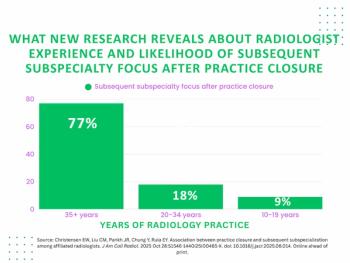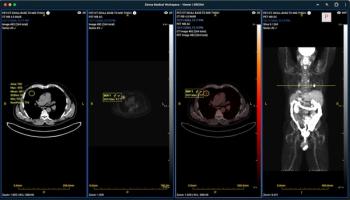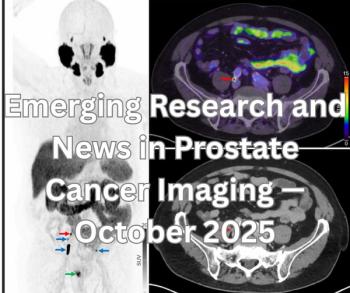Radiologists Outliving Radiology
Do we get mired in the rut of generational grumbling, or do we reframe resentments into perspective of what we have overcome?
One might glance at the above headline and think, “Oh, this is going to be yet another doom and gloom piece about AI kicking rads out of their own field.” If you have read much of my writing, you know I don’t anticipate that happening for a very long time, if ever. Besides, that would be more like radiology outliving radiologists.
No, the bee in my bonnet (or bat in my belfry maybe) got started a couple of weeks ago. I wrote about the inciting incident in my blog last week, something I have come to think of as “the sono/CT two-step.” It is a
an exercise in futility that wastes time, resources, and goodwill, one you would expect would fail to stand the test of time. Yet here I am, over 20 years out from residency when I first saw the two-step, and it is still happening. It will probably outlive me.
As unsatisfying as that might be, we individual rads do have the pleasure of outliving aspects of our field that we won’t miss. Sometimes, that enables us to regale younger rads with “war stories” of things we saw before their time. I was on the receiving end of that from a crusty ol’ Marine during my first job, who recalled the spectacle of pneumoencephalograms. He simultaneously entertained me while making me very glad I never needed to do one.
We are happy to leave such things behind, but it often leaves a bitter residue: I had to put up with X, and now others don’t. Rads who remember spending entire days doing one fluoro after another, trying to cram as much other work as possible in between, might sourly regard newer additions to the field who say things like “I don’t do fluoro.”
One of my body imaging attendings recalled being summoned into the hospital whenever a CT was to be done in the middle of the night because the scans were much rarer, slower, and needed more oversight to be properly diagnostic. She probably thought subsequent generations of rads who didn’t have to come in for each case (or, even better, could read from home in cases of super STAT scans), would never fully appreciate what she went through.
That’s not at all confined to radiology. When I did my internship, we were “on call” every third or fourth day. Depending on our rotation and what day of the week it was, that could mean being in the hospital for 16 to 24 hours. Even though the rules said 24 hours was the limit, we never got out of there on time. There was always a lag of an hour or three while we went on rounds, relayed our info to the next shift, and did whatever remaining tasks needed to be completed.
When we saw subsequent generations of interns getting better legal protections for number of hours worked (and other niceties, like nurse teams to take care of IVs and blood draws that had previously been the interns’ chore), we grumbled. Generations of docs before us grumbled about how “easy” they thoughtwe had it. Their call shifts had not only all been 24 hours, but they had to work the whole next day as well.
I might say those of us who lived through the era of going to Louisville for oral boards will forever resent subsequent generations of rad who got away without them, but the orals are coming back. A few generations of rads snuck through the oral-less window. Meanwhile, the lifetime certification thing vanished just a couple of years too soon for me, so I got stuck with maintenance of certification (MOC). Timing can mean everything.
Harboring such resentments probably doesn’t do one much good in the long term. Reframing them seems a better way to go: Look at all I surmounted and mastered. I am more accomplished than 99 percent of kids these days will ever be. That might not be objectively true in the fullness of time, but it feels pretty darned good to think about in the now.
Advancing technology provides plenty of fertile ground for outliving (or predating) various aspects of our field. I was in the generation of residents, for instance, who went from hanging films to using PACS and from using transcriptionists to employing voice recognition software. I thus outlived the vagaries of alternators and the limitations of “light boxes.” There were also the joys of occasionally providing chatty commentary to the humans who once typed up my reports.
Things are unquestionably gained with such technological advances, but there is also good stuff for one to miss. Some of the attending rads who trained me were absolute wizards with plain film and fluoro, having the ability to divine things from those simple images that I daresay nobody in current practice would be able to glean.
At the time, CT and MR were advancing by leaps and bounds. A rad resident’s capacity for learning was overwhelmed with all the new stuff. There was little room left over for learning the wizards’ tricks, and a sense that we might be outliving XR anyway. We haven’t quite gotten there, but I do feel a little Gandalf-ish when I remember a trick or two from those old mentors. I occasionally wow some younger rad or referring clinician: “Why yes, the patient does have mitral valve prolapse. How on Earth could you have predicted that from a lateral chest X-ray?”
We outlive some things we miss even more keenly. Sometimes they expired even before we were around to see them firsthand. We only know about them because our mentors watched them die and told us about the good ol’ days. A lot of that centers on things like autonomy and finances (if you want a graphic representation of why that might be, feast your eyes here:
A lot of rads today, for instance, believe they have witnessed the effective death of traditional partnership tracks in our field, and/or interest in them. Some believe owning your own outpatient imaging center isn’t economically worthwhile, if even viable. Others see a steady trend toward telerad and think that without hospitals coming up with ways to sweeten the pot for “boots on the ground,” on-site working is dying.
I’d suggest avoiding heavy reliance on such predictions. They can be fun food for thought, but a lot of them turn out to be Pythonesque (“not quite dead”), or Twainian (“greatly exaggerated”).
Newsletter
Stay at the forefront of radiology with the Diagnostic Imaging newsletter, delivering the latest news, clinical insights, and imaging advancements for today’s radiologists.

































